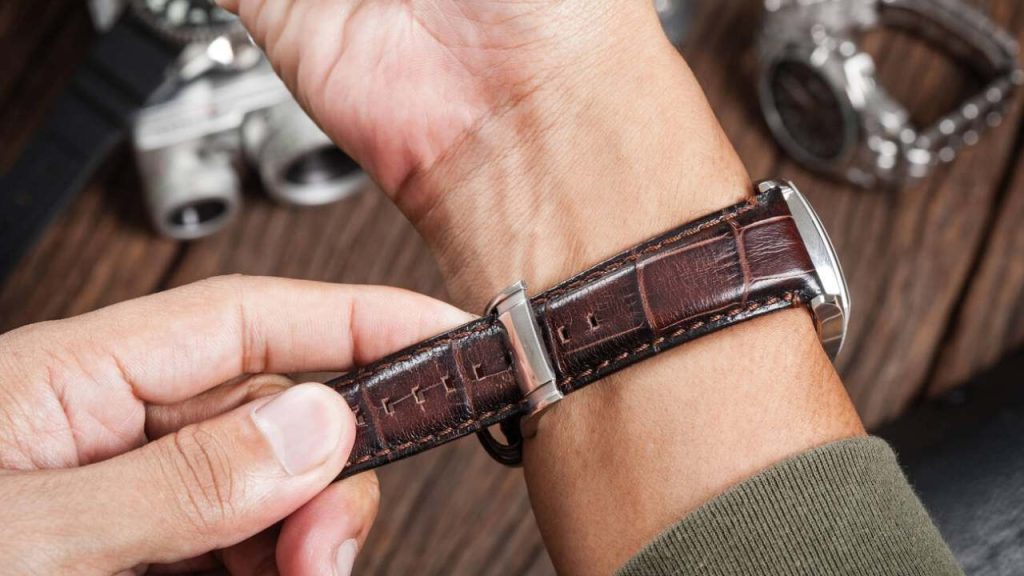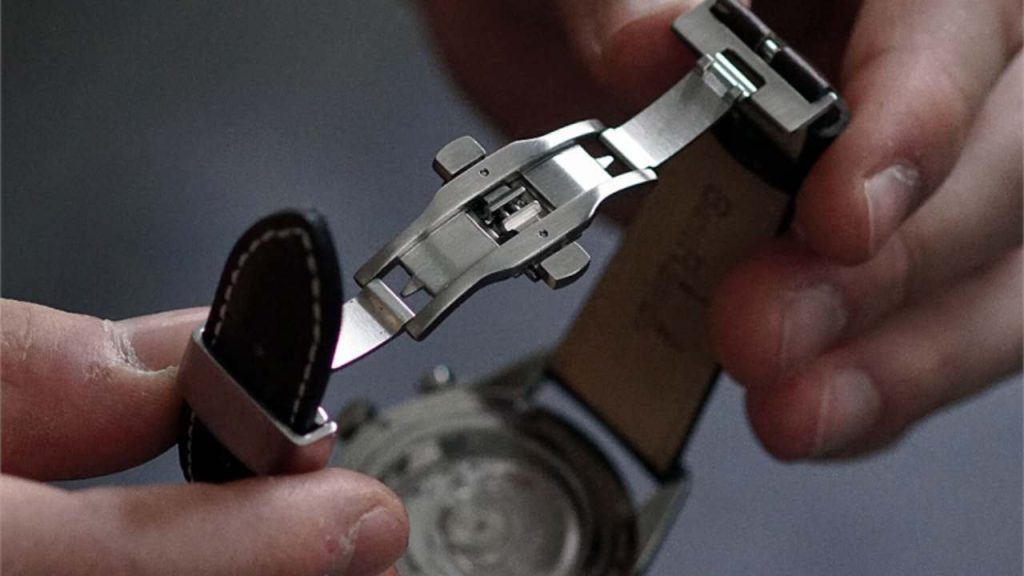When it comes to watches, everyone is fixated on the watch band, dials, and complications.
And details like the watch clasp types are easier to forget.
But let me tell you, the clasp is just as important as the strap and dial.
It’s the finishing touch, the secure closure that ensures your watch stays on your wrist.
Watch Clasp can also impact how your watch fits and ultimately your comfort.
So, let’s explore the different types of watch clasps.
Table of Contents
Different Types of Watch Clasps? Why So Many Types?
Well, first and foremost, different watch clasps provide different levels of security and ease of use.
Some are more secure but may be challenging to operate, while others are easy to open but may not hold the watch as securely.
Additionally, certain styles of watch clasps may complement specific types of watches or fit differently on the wrist.
There is a factor of personal preference as well.
The history of watch clasps also plays a role in the variety available today.
For example, the buckle clasp has been used for centuries and is still commonly seen on watches today.
In the same way, we have different styles of watches, from dress to sporty. The different clasp types match the style and function of a watch.
Buckle Clasps
Simple, reliable, and timeless – the buckle clasp is “the” way of securing the watch to your wrist.
Comprised of a pin, tang, and buckle, buckle clasps mirror the design of a typical belt buckle.
Therefore, you can expect a secure and easy-to-adjust fit.

Comfort is also a defining feature of buckle clasp with a high level of customization.
This flexibility ensures that the watch sits snugly and comfortably on your wrist, reducing the chances of it slipping around or causing discomfort.
Moreover, buckle clasps do not have any sharp edges or protrusions that might pinch the skin.
The simplistic design minimizes the bulk on the underside of the wrist, enhancing comfort for everyday wear.

Leather straps typically use a buckle clasp, making it a popular option for dress watches.
However, the rise of NATO straps and other fabric straps like canvas has made this type of clasp more versatile and suitable for different styles of watches.
The only drawback is that the excessive use can wear out the strap, causing it to fray or break over time, especially with leather straps.
Furthermore, finding the perfect fit may require creating additional holes, potentially diminishing the strap’s aesthetic appeal.
Note that Buckle Clasp is the generic name, and more specific is Pin or Tang Buckle.
Deployant Clasps
Deployant clasps were first introduced by Louis Cartier.
These provide a sophisticated solution to the weakness of traditional buckle clasps, offering an enhanced level of security.
A deployant clasp is usually found with metal watch bands, though they can also be used with leather straps.
A defining feature of the deployant clasp is its ability to maintain a closed loop around the wrist, even when fully open.

This means that the risk of the watch falling off when the clasp is undone is significantly reduced.
When fastened, the deployant clasp hides the excess strap within the loop, offering a cleaner and more streamlined look than the buckle clasp.
This feature also prevents the strap from wearing out quickly thereby enhancing its longevity.
However, it does have its drawbacks. Deployant clasps can be complex to operate and may require a little time to get used to.

They are also bulkier than buckle clasps, which can make them less comfortable to wear for extended periods.
Finally, due to their intricate design, they tend to be more expensive to replace if damaged.
Note that, Deployant and Deployment clasps are often confused due to their similar names.
However, they are essentially the same thing. It’s a matter of personal preference which one term you want to use.
Butterfly Clasp
Also known as a hidden clasp, the Butterfly clasp is renowned for its sophistication and for maintaining a sleek profile.
This type of clasp, when closed, seamlessly blends into the strap, providing an uninterrupted, clean look.
A Butterfly clasp is typically used with metal bracelets, but it can also be found on high-end leather straps.
The mechanism consists of two hinged metal flaps that open to the shape of a butterfly, giving the clasp its name.

The primary advantage of a Butterfly clasp is its ability to distribute the weight of the watch evenly across the band, ensuring a comfortable fit.
Additionally, it’s designed to prevent the strap from excessive wear and tear, enhancing its durability.
However, like the Deployant clasp, the Butterfly clasp can be a bit tricky to operate until you familiarize yourself with its mechanism.
It’s also less adjustable than other types of clasps, which can be a concern for those with non-standard wrist sizes.
But at the same, if you know your size, the butterfly clasp will fit you like no other clasp.
Diver Clasp
The Diver clasp, as the name suggests, is specifically designed for use with diving watches.
It is a type of deployant clasp but is known for its unique feature – an extension mechanism.

This mechanism allows the band to be extended to fit over a diving suit.
When closed, the Diver clasp provides a secure fit, ensuring your watch stays in place during underwater exploration.
However, its utility is not confined to diving alone; the extension can be just as useful when wearing a watch over thick winter jackets.
It’s important to note that while the Diver clasp is highly functional, it may not be the most aesthetically pleasing option.
It creates a bulkier profile, which might not be as sleek or comfortable for everyday use.
Despite this, for those who value function over form and require additional extension, the Diver clasp is an excellent choice.
Jewelry Clasps
Jewelry clasps, also known as lobster clasps, are traditionally used in jewelry design but have found their way into the realm of watches.
They are typically used in women’s watches or watches with slim, delicate straps.
These clasps operate with a spring mechanism that opens and closes the claw, enabling a secure connection.

However, the small size and delicate nature of the clasp can make it slightly challenging to operate, particularly for those with larger wrists or limited dexterity.
One of the key benefits of jewelry clasps is their aesthetic appeal. Their sleek and minimal design blends seamlessly with the strap, adding an elegant touch to the overall look of the watch.
Despite these advantages, jewelry clasps are not known for their longevity.
The spring mechanism can wear out over time, requiring replacement.
But if elegance and sophistication are your priority, jewelry clasps can be the perfect choice.
Glidelock Clasp
The Glidelock clasp, primarily seen in Rolex’s Submariner and Sea-Dweller collections, is a game-changer in terms of comfort and adjustability.
This innovative clasp allows for precise extensions and adjustments of the bracelet length without the use of any tools.

Glidelock is particularly useful for divers who need to adjust their watch band over their wetsuit.
Yet, it also comes in handy for everyday use, allowing individuals to easily adjust the band to fit their wrist comfortably in fluctuating temperatures.
The Glidelock clasp, while functional, does not compromise on aesthetics.
It maintains a sleek profile that blends seamlessly with the strap.
However, it does add a degree of complexity to the overall mechanism.
The Glidelock is a proprietary technology of Rolex, and its replacement parts come at a premium.
Despite this, the Glidelock clasp offers functionality, comfort, and aesthetic appeal, making it a popular choice among watch enthusiasts.
Hook and Loop Closure
Also known as Velcro, the hook and loop closure is a simple and practical choice, especially for sports and outdoor watches.

The fastening mechanism involves two fabric strips, one with tiny hooks and the other with smaller loops. When pressed together, they form a secure bond.
The key advantage of a hook and loop closure is its incredible adjustability.
It can accommodate virtually any wrist size, ensuring a comfortable and secure fit. It’s also easy to fasten and unfasten, making it convenient for everyday use.
However, while functional, it lacks the aesthetic appeal of metal or leather clasps.
Over time, the loop part may also wear out and lose its grip, necessitating replacement
Overall, the hook and loop closure is incredibly practical, making it great for sports watches, and for dappers who prioritize comfort and convenience.
Which Watch Clasp is Right For You?
Choosing the right watch clasp depends on your lifestyle and personal preferences.
If you’re an adventurer who’s constantly engaging in outdoor activities, the adjustability and durability of the hook and loop closure, or the Glidelock clasp’s precise adjustments, might serve you best.
For those who frequently dive or engage in water activities, the Diver clasp with its extension mechanism is a suitable choice.
If you prioritize elegance and sophistication, a buckle clasp could add a touch of class to your timepiece.
Similarly, a butterfly clasp provides both a secure fit and a sleek look for formal occasions.
Remember, your watch is an extension of yourself, so choose a clasp that best complements your style and meets your needs.

I am George. I am a watch enthusiast as far as I can remember.
My passion for horology extends beyond the surface, delving into the art, history, and precision that make each watch a masterpiece.
